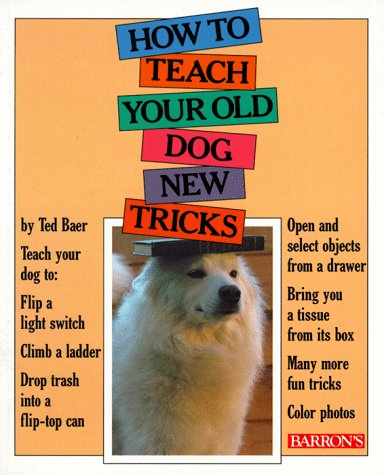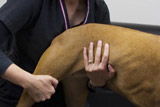
 Credit: Dagnyg via Flickr
Credit: Dagnyg via Flickr
For a large part of human history, dogs have been playing a major role. Early in human history they were companions on the hunt, their fierce loyalty and sheer ferocity being high – value help in a harsh world. As time passed and the world grew (relatively) safer, the need for dogs bred for the hunt or for being the hounds of war decreased, and thus they were trained instead to be the friends of men. Nowadays dogs are trained to live with men, guard with a toned – down version of their ferocity and with all their loyalty, and on off – days of relaxation, to do tricks.
However, training often starts at an early age, ensuring that the lessons learned stick. Older dogs are then thought to be incapable of learning, especially since training is often counter-intuitive and thus goes against the instinctive reasoning of most dogs. This isn’t strictly true – a dog’s instinctive reasoning is the foundation of trick training. It just turns out that a dog is a bit harder to train when it is older, but it isn’t an impossible task.
In training, starting with the basics is very important. Dog training is no different. The fundamental trick of making a dog respond to a certain “trigger” is the basis of all dog tricks, and it is a simple trick to teach. First, decide on what you want the trigger to be, and prepare something that will serve as a reward (plenty of it). The main foundation trick, so to speak, is to get the dog thinking that responding to the trigger will lead to the reward. This is the start of all dog training, and to get it done, use the trigger (say, a finger snap) and then follow it up with the reward. Do this regularly until the dog starts to expect a reward every time the trigger is used. Keep in mind that the trick to be taught will have to have a unique trigger – thus this preliminary process will have to be repeated for each trick.
Once this mental association between trigger and reward is established, maintain this association by regularly doing the trigger – reward sequence. This renewal of the association is doubly important in older dogs, which have more experience and set behaviors to deal with that could potentially drown it out. If the link is already in play, then other tricks can be taught slowly using the same method.
One of the most important tricks and a potentially life – saving one is training a dog to come and to go. Using a trigger word or phrase is most helpful here. Choose a trigger word or phrase to be assigned to each action, say it to the doge in question, and give a reward. Over time, the association between the trigger will be established, and then when the mental association is strong enough (this might take a while), put some distance between the dog and yourself. Use the trigger command again, and when the dog comes, give a reward. Repeat the process at irregular times, varying the reward but maintaining consistency.
 How to Teach Your Old Dog New Tricks
How to Teach Your Old Dog New Tricks Hip Dysplasia in Dogs
Hip Dysplasia in Dogs
Hip Dysplasia in Dogs
Hip Dysplasia in Dogs
 Indipet Slow Feed Pet Bowl
If you have a dog that loves
Indipet Slow Feed Pet Bowl
If you have a dog that loves
 Manners Versus Obedience In Dog Training
Most people who get a dog re
Manners Versus Obedience In Dog Training
Most people who get a dog re
 Looking for a Friend: Why the Boxer Might Be Perfect For You
The Typical Greeting of a Boxer
Looking for a Friend: Why the Boxer Might Be Perfect For You
The Typical Greeting of a Boxer
 Dogs :: Four Basic Commands That Your Dog Need to Learn (Page 1 of 2)
There are certainly lots of factors for proprietors to
Dogs :: Four Basic Commands That Your Dog Need to Learn (Page 1 of 2)
There are certainly lots of factors for proprietors to
Copyright © 2005-2016 Pet Information All Rights Reserved
Contact us: www162date@outlook.com